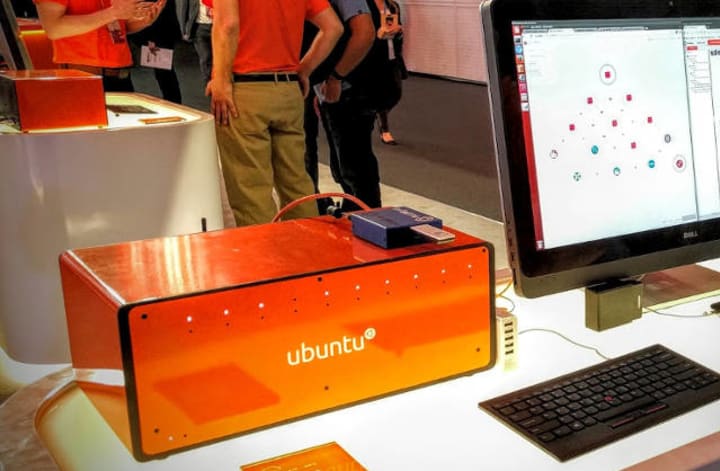Canonical
on 25 February 2016

Ubuntu OpenStack running SDN, VNFs and virtualised customer premise equipment (vCPE)
The third day of Mobile World Congress was an demonstration in what’s going to be the ‘new normal’. Well, maybe not normal, but it gave us a glimpse into how virtualised network functions (VNFs), industrial IoT, and over-the-top (OTT) services may be evolving.
GE’s Bill Ruh gave some interesting insights about industrial IoT, which I admit, I didn’t fully get until his talk. When we think of the Internet of Things, IoT, many of us think of the small, connected devices surrounding us today, from mobile phones to drones or wearables. Industrial IoT refers to devices, big or small, that are more impersonal. Automated robot arms, large machinery, and small metering tools are all examples.
Bill pointed out that some unique aspects of industrial IoT are that these devices don’t have personal privacy concerns, but rather concerns over who controls them. When it comes to securing them, you have a different kind of protection that you’re trying to bring. Data sovereignty and protection from criminal attack are the sort of protections we think about for industrial IoT, and less about the sort of personal data theft to which our more personalized IoT devices are potentially susceptible targets.
Most of us now use modern messaging applications like Telegram, Messenger or WhatsApp. These are examples of over-the-top (OTT) applications. OTT refers to IP-based applications that perform new or enhanced features on top of traditional telco networks. Every new OTT app runs essentially as a VNF. VNF OTT apps are rapidly becoming commoditized. Commoditization lowers cost, leads to pervasiveness, and increases innovation.
We’re now seeing virtual network operators selling access to completely generic messaging and voice applications not tied to a traditional branded product. I expect to see all kinds of new OTT apps in the near future. The really cool thing about commoditized VNFs is that they’re now running as commoditized systems on platforms like Ubuntu OpenStack. With scalable, commodity SDN and VNF solutions it won’t be long before OTT apps are no longer over the top but rather peer functions running side-by-side with the core, OpenStack infrastructure.
Another theme that’s come as no surprise to fans of Ubuntu and OpenStack is that NFV conversations are no longer about how to do it, but rather, which flavour of OpenStack to do it on. OpenStack has emerged as the de facto platform for NFV infrastructure for hosting VNFs and Ubuntu OpenStack runs over 65% of the largest OpenStack clouds in the world.
If you’re evaluating, testing or implementing VNFs, make sure you’re doing it on Ubuntu OpenStack. If you want to see VNFs in action or learn more, come to the booth in Hall 3, 3J30.
Remember to follow @ubuntu, @ubuntucloud and @BaumanBill on Twitter for real-time insights and updates throughout the #MWC16 show.



